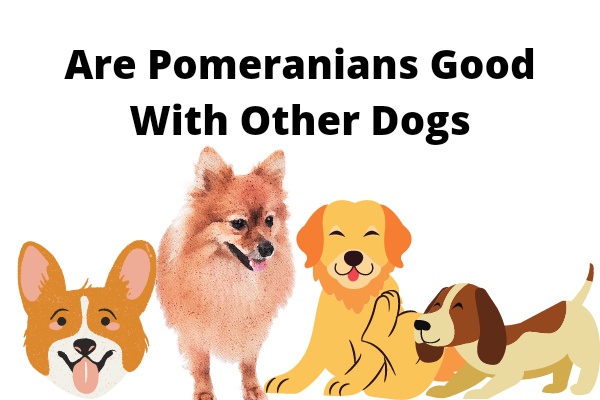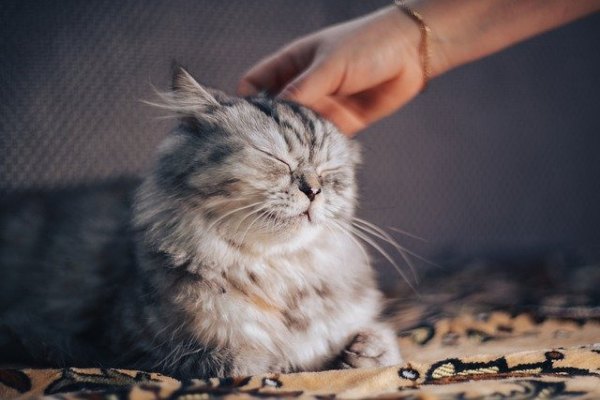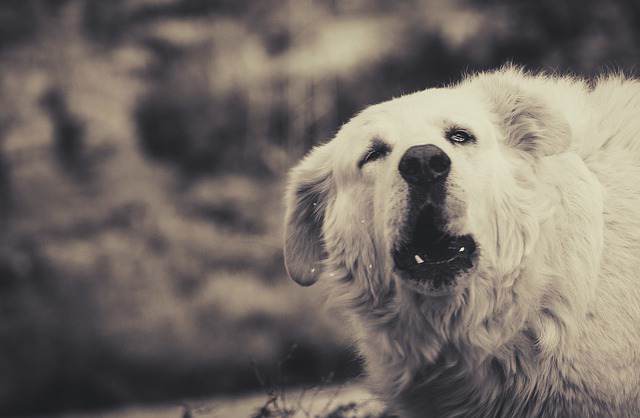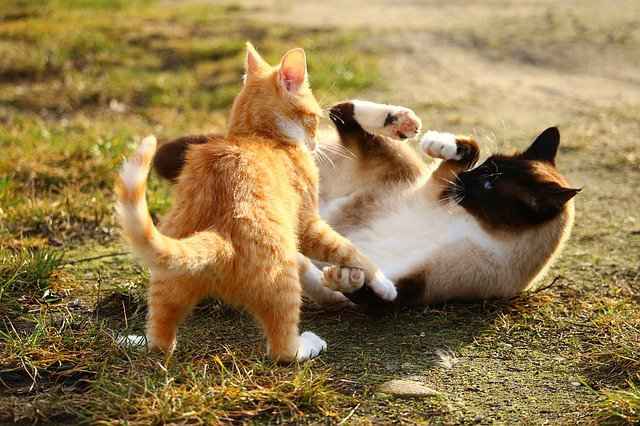Are Pomeranians Good With Other Dogs: 10 Pros, Cons & Tips

I hear people ask are Pomeranians good with other dogs, therefore we will address this question in this post, so read through for more info.
In this post, we will discuss some pros and cons of getting your Pomeranian a second dog, irrespective of the cons, the pros outweigh the cons.
We will also discuss how to introduce your Pom to other dogs, and finally, we will look at some reasons why your Pom may not accept other dogs easily.
Before we dive into all this let me quickly answer your question are Pomeranians good with other dogs!
Are Pomeranians Good With Other Dogs
Yes, Pomeranians are social breeds that get along well with other dogs, but due to their size and the fact that pairing any toy breed with a large breed may accidentally harm them, Pomeranians are better paired with other toy dogs.
Therefore, if there’s a need to bring in a second dog, we advise you get another Pom or a toy dog with a similar personality.
Here are some breeds of dogs that get along well with Pomeranians:
- Pomeranians
- Shih Tzu
- Poodles
- Maltese
- Pugs
- Yorkies
Irrespective of the fact that Pomeranians are better with other toy dogs, they can still get along with other large breeds with low energy and a good personality.
Benefits of getting a second dog for Pomeranians
Here are some common benefits of getting a second dog for your Pomeranian:
- Getting a second dog will prevent separation anxiety in Pomeranians.
- Second dog help Pomeranians to be more socialized.
- Getting a second dog can help solve some Pomeranian’s behavior issues.
- Pomeranians get more exercise when they have a second dog.
- A second dog may help solve Pomeranians aggression.
- Getting a second dog prevent boredom and loneliness.
- Getting a second dog is a sort of teaching responsibility.
- Second dog help improve personalized companionship.
- Two dogs can become playmates for each other.
- Getting a second dog can help resolve fear and timidity.
Disadvantages of getting a second dog for your Pomeranian
Here are some common reasons why you shouldn’t get a second dog for your Pomeranian:
- Training a Pomeranian and other dogs can be very tricky.
- Grooming a Pomeranian and a second dog is a lot of stress.
- A Pomeranian may learn a bad habit from a second dog.
- Having a Pomeranian and a second dog may trigger off rivalry and jealousy.
- Getting a second dog for your Pomeranian will double the cost of maintenance.
- Having a second dog for your Pomeranian may increase the risk of aggression.
- You will have more mess to clean up by keeping a Pomeranian and other dog.
- Having a second dog and a Pomeranian increases your standard of living.
- Walking a Pomeranian and another dog is a big stress.
How to introduce a new dog to your Pomeranian
Here are some steps to follow when introducing a new dog to your Pomeranian:
Step 1.
Look through your home and pick up everything of value to your Pomeranian, be it food plate, toys, bed, etc.
Keep everything that belongs to your Pom out of sight for your Pom to avoid resource guarding before moving to the next stage
This is to avoid unnecessary possessive behaviors because your Pom might want to protect his stuff from the new dog, which may lead to aggression.
Step 2.
Invite your family member or a friend because it is much easier for two persons than one person.
If your Pom is having aggressive issues then I would suggest picking a neutral venue that your Pom can’t claim.
Go for a small walk with both dogs on a leash, hand your friend the new dog and handle your Pom.
Keep your Pom on your side and let your friend keep the new dog on his or her side, then watch both dog reactions.
Step 3.
Let your friend walk in front of you and your Pom with the new, make sure you stay positive and not panic because your Pom reads your energy.
Let your friend walk with the new dog in front of you and your Pom for 2 to 3 minutes with positive energy.
Then switch position, you go in front with your Pom while your friend stays back with the new dog, repeat the process for two to three minutes.
This process allows both dogs to get used to each other because dogs use smell to get or create bonds.
If either of the dogs gets agitated or anxious, continue to switch the position while walking until both dogs
Step 4.
Let both dogs walk next to each other if everyone is fine and playful when the walk is in progress.
It will be clear if both dogs can get along by none of them will act wired or aggressive towards the other.
If both dogs are playful let them play if they are still anxious continue the walk until they both bond well and start to accept each other.
After this introduction walk is done, it’s time to go home!
Step 5.
On your way home, don’t over pet your dog to avoid over-excitement that may lead to unnecessary behaviors.
Keep the leash on both dogs and do not put pressure on the leash as this may pass negative vibes or energy to both dogs.
Try to start something both dogs can be interested in doing, for example doing a little exercise or watching dog movies, just do anything that can increase bonding.
Step 6.
It’s the first feeding time for both dogs.
You can put both dogs close to each other in their different crates if you have a crate this helps to avoid unnecessary behaviors.
This will help you find out if any of the dogs have food aggression, and you can fix this.
Most importantly, don’t show one show one-sided affection too much, as either of the dogs can be pissed off.
Step 7.
Training time.
Obedience training should be done together as well as other forms of training.
For example, teach both dogs the word sit, stay, heel, paw, etc. All this should be done together.
Lastly, it’s playtime.
Step 8.
Start any game or play that will involve both dogs may be retrieving the ball, just any source of games.
You can as well play some movies for both dogs to sit and watch.
Make sure you have everything double like two beds, a pair of toys, two feeding plates, and two drinking plates.
For the first day never allow both dogs to be out of your sight.
Repeat every process that didn’t work out and take your time.
Wrapping up
You should use the following tactics to assist the aggressive Pom and the new dog get along:
- Using doors, dog gates, or crates to separate the dogs for feeding.
- Provide quiet areas where the dogs may take a break from each other.
- Body language is being studied so that humans can intervene if the dogs become anxious before a fight breaks out.
- Keeping a watchful eye on the dogs when it comes to toys and resting spots.
- While the dogs are playing, you’re keeping a tight eye on them.
- Providing enough of exercise for the dogs.
- By covering windows with a clear film, giving the dogs puzzle toys, and generally decreasing trigger exposure, both dogs’ stress levels can be reduced.
- You may utilize hand targets and “go to mat” behaviors to relieve stress by teaching them to your dogs.
Read more: Why Is My Dog Aggressive Towards Other Dogs (8 Reasons & Solutions)
Why your Pomeranian may not get along with other dogs
Here are some common reasons why your Pomeranian may not get along with other dogs:
- Poor or lack of proper socialization.
- Poor or lack obedience training sessions.
- Traumatic experience from either of the dogs.
- Fear
- Temperament issues.
I hope your question Are Pomeranians Good With Other Dogs was answered!


![Why Do Indoor Cats Run Away [17 Reasons] Why Do Indoor Cats Run Away](https://petcreeks.com/wp-content/uploads/2021/07/Why-Do-Indoor-Cats-Run-Away-768x644.jpg)
![Can Cats Find Their Way Home If Lost [My Opinion] can cats find their way home](https://petcreeks.com/wp-content/uploads/2021/01/photo-1565615239735-97416df8ffe2_resize_25_compress39.jpg)

![Why Are French Bulldogs So Popular [17 Reasons] Why Are French Bulldogs So Popular](https://petcreeks.com/wp-content/uploads/2021/07/Why-Are-French-Bulldogs-So-Popular-768x644.jpg)
